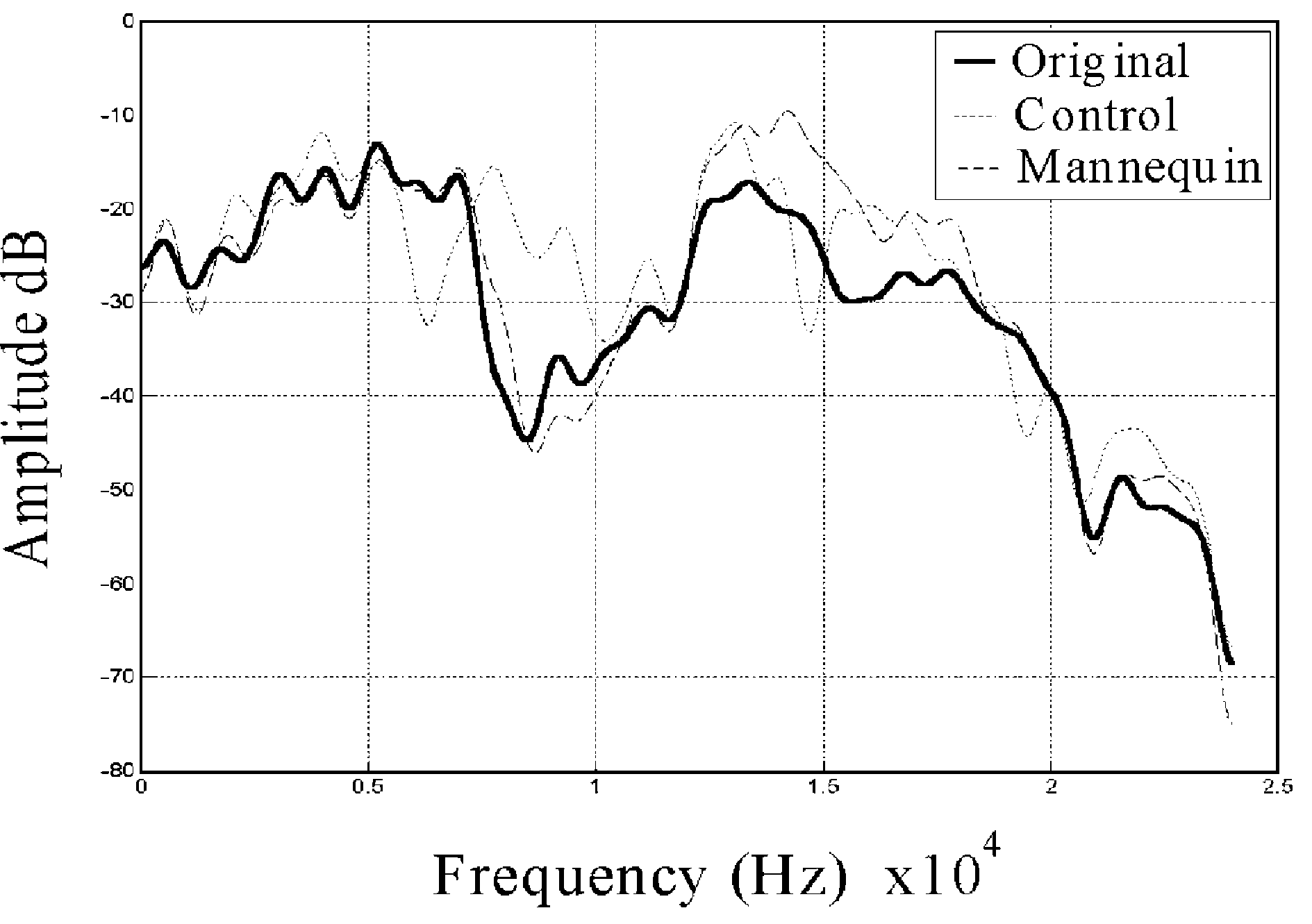In order to localize an external sound source, the human brain processes several acoustic cues which vary depending on its position relative to the subject. They are primarily, the interaural arrival time and intensity differences and the monaural spectral modifications by the pinnae, head and torso. For every position these cues can be gathered as a mathematical function, the so-called head-related transfer function (HRTF), that applied to any crude sound makes it perceived as coming from such position, in spite of being presented through headphones. A R+D project on sensory substitution for blind people’s orientation and mobility using sounds aim to present the subject with an auditory coded image of the frontal scene (Carlile & Pralongn, 1994). For every coordinate in the scene where a piece of object surface exists, image after image is sent on-line as a spatialized and very locatable ‘click’ that make the subject perceive the scene as if it were virtually covered by sound sources. HRTFs obtaining for every coordinate imply an individual long-lasting recording session with a miniature microphone located at the entrance of each blocked ear channel. The need for higher resolution has led us to study the possibility of substituting the human subject by a mannequin replica of him with a comparable acoustic spatial response.
An accurate reproduction in silicone of the pinnae and head of an adult male was made. Binaural pairs of HRTFs were obtained for 27 positions at different horizontal and elevation coordinates, at distances of 0.5 and 1.34 m in the frontal arc, for the human original (O), the mannequin (M) and a second human subject as control (C). The spectrum range of interest went from 0.3 to 18 kHz.
We analysed the graphical similarities between these subjects for a random selection of the HRTFs, concerning the spectral features usually considered to be implied in the localization process (primarily spectral peak and dip amplitude and position, and the low order spatial frequency of the curve) (González Mora et al. 1999).
A quantitative measurement of the similarity and a perceptual validation in a localization task using virtual sound sources obtained with individual and non-individual HRTFs were carried out.
We have observed two HRTF spectral feature behaviours in the spectral ranges below and above the 10 kHz point. The similarity of M-O in the first range for the whole graphics studied, and their clear distinction from the control for a majority of them (see figure) are remarkable. In the second range, there was a conservation of the general structure of the curve for M-O with the possible appearance of differences whose perceptual relevance remains unknown, but that could be due to the methods measurement variability.
The results support the possibility that a mannequin reproduction of a human subject has a comparable acoustic behaviour to this one, in such a way that the person can localize with a similar precision virtual sound sources generated using both its own and the replica obtained HRTFs. Quantitative comparison and perceptual validation will allow a more precise conclusion on the value of these preliminary results.
This work is supported by grants from the Spanish Science and Technology Ministry and from Europeans Founds (FEDER), ref. 1FD1997-1237.

